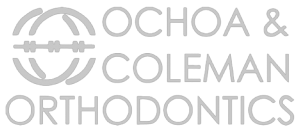Adolescent Treatment
What Are the Benefits of Two-Phase Orthodontic Treatment?
Two-phase orthodontic treatment is a specialized process that combines teeth straightening with physical, facial adjustments. The primary advantage of this two-phase approach is to maximize the potential for achieving a healthy, functional, and aesthetically pleasing result that will remain stable throughout your lifetime.
What Happens If I Delay Treatment?
Delaying orthodontic treatment can lead to a need for more invasive procedures later in life that might not fully correct your smile. Early treatment is most effective for achieving long-lasting results.

Phase One: Building the Foundation for Lifelong Beautiful Smiles
The objective of Phase One treatment is to develop the size of the jaw to accommodate all permanent teeth and align the upper and lower jaws. Some children show early signs of jaw issues as they grow. Identifying excessive or insufficient growth of the upper and lower jaws in children over the age of six makes them suitable candidates for early treatment.
Planning Ahead to Preserve Your Smile Since
children’s growth occurs rapidly, they can benefit greatly from early-phase treatment using devices that guide the growth relationship between their upper and lower jaws. This establishes a solid foundation, ensuring sufficient space for permanent teeth to emerge. Early correction can prevent later extractions of permanent teeth due to overcrowding or surgical realignment of the jaws. Delaying treatment until all permanent teeth have come in may result in a jaw misalignment too severe to be corrected effectively with braces.
Creating Records to Determine Your Customized Treatment Plan
Orthodontic records, including tooth models, x-rays, and photographs, are essential for selecting the right appliance, estimating treatment duration, and determining appointment frequency.
Resting Period
During the resting phase, remaining permanent teeth will continue to emerge. It’s generally not recommended to use retaining devices during this time as they might interfere with the natural eruption of permanent teeth. Allowing some freedom of movement for existing permanent teeth aids in their proper eruption path. If the first phase of treatment was successful, it should have created enough space for teeth to emerge without complications.
Monitoring Your Progress
By the end of the first treatment phase, teeth won’t be in their final positions. Achieving their final alignment is the focus of the second treatment phase. During the resting period, selective removal of primary (baby) teeth may be necessary to facilitate proper eruption. Regular check-up appointments every six months are needed to monitor the transition into permanent dentition.
Second Phase: Achieving Health and a Radiant Smile
The goal of the second treatment phase is to ensure each tooth finds its ideal position within the mouth, harmonizing with the lips, cheeks, tongue, and other teeth. When this equilibrium is achieved, the teeth will function effectively together.
Tooth Movement and Retention
In the initial phase, orthodontic records were created, and a diagnosis and treatment plan were established. Various appliances may have been used as needed. The second phase begins once all permanent teeth have erupted and typically involves braces on all teeth for an average of 24 months. After completing the second phase, retainers will be worn to maintain your beautiful smile.
